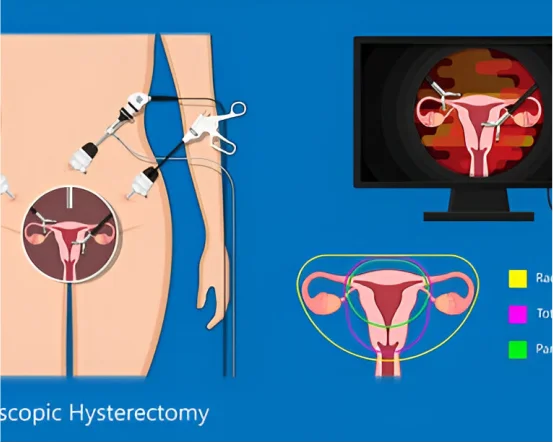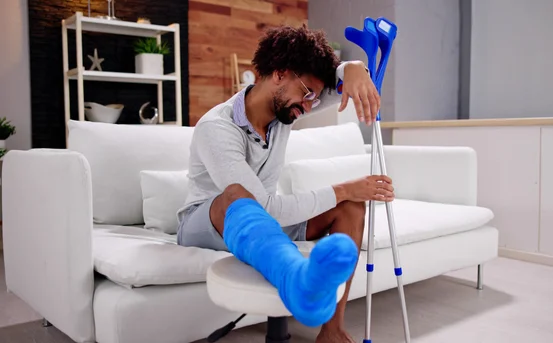Introduction
Spinal surgery is often viewed as a last resort, recommended only when non-surgical treatment methods fail to provide adequate relief or when spinal problems pose a risk to overall health and mobility. The spine is a complex structure composed of bones (vertebrae), intervertebral discs, nerves, and soft tissues that support body movement and protect the spinal cord. When something goes wrong in this structure, the results can be both painful and debilitating. While some spinal conditions develop gradually over time, others can occur suddenly due to trauma or disease. Understanding the causes of spinal surgery is essential for early detection, management, and possibly prevention of severe spinal complications.
Causes of Spinal Surgery
- Degenerative Disc Disease :- Degenerative disc disease is a common reason for spinal surgery, particularly in older adults. As people age, the intervertebral discs that cushion the vertebrae begin to break down or degenerate. This degeneration can lead to reduced disc height, inflammation, and pain due to nerve compression. While not all cases require surgery, those that result in severe pain or neurological deficits may be treated surgically through spinal fusion or disc replacement.
- Herniated or Slipped Discs :- A herniated or slipped disc occurs when the soft inner material of a spinal disc pushes out through a tear in the outer layer. This can cause severe pain, numbness, or weakness by pressing against nearby nerves. If conservative treatments such as physical therapy or injections fail to alleviate symptoms, surgical procedures like discectomy may be necessary to remove or repair the affected disc.
- Spinal Stenosis :- Spinal stenosis is the narrowing of the spinal canal, which places pressure on the spinal cord and nerves. This condition can result in chronic back pain, leg pain, numbness, or even difficulty walking. It is commonly seen in aging populations and may be due to arthritis or disc degeneration. When conservative measures are no longer effective, decompressive surgery may be performed to relieve the pressure on nerves.
- Scoliosis :- Scoliosis refers to an abnormal curvature of the spine and is often diagnosed during adolescence. While mild cases may not require intervention, severe curvature can lead to significant physical deformity, discomfort, and even lung or heart complications. In such instances, spinal surgery involving rods and screws may be used to correct and stabilize the spine.
- Spinal Fractures :- Fractures of the spine can be caused by trauma, such as car accidents or falls, or due to conditions like osteoporosis, which weakens the bones. Depending on the location and severity of the fracture, spinal surgery may be required to stabilize the spine, relieve nerve compression, or repair damaged vertebrae using screws, rods, or plates.
- Infections :- Spinal infections, such as osteomyelitis or discitis, can severely damage the spinal column and its surrounding tissues. These infections may result from bacteria spreading through the bloodstream or as a complication of surgery or injection procedures. When antibiotics and other treatments are ineffective, surgery is required to remove infected tissue, drain abscesses, and stabilize the affected area.
- Tumors :- Spinal tumors can originate in the spine or spread from other parts of the body. These abnormal growths may compress the spinal cord or nerves, leading to pain, weakness, or paralysis. Surgery is often necessary to remove the tumor, especially if it’s causing neurological deficits or structural instability in the spine. The complexity of surgery depends on the location, size, and type of tumor.
- Congenital Spine Disorders :- Some individuals are born with structural abnormalities in the spine, such as spina bifida or congenital scoliosis. These disorders may not cause symptoms immediately but can lead to complications as the child grows. Surgical correction may be needed to prevent deformity progression, relieve nerve compression, or stabilize the spine.
- Failed Back Surgery Syndrome :- In some cases, individuals who have undergone spinal surgery continue to experience pain or develop new symptoms. This condition, known as failed back surgery syndrome, may necessitate revision surgery. Causes include incomplete decompression, scar tissue formation, or hardware-related issues. Identifying the exact source of pain is critical before proceeding with additional surgical interventions.
- Spinal Instability :- Spinal instability refers to excessive movement between vertebrae, which can result from injury, degenerative changes, or previous surgery. This abnormal motion can irritate nerves and lead to pain. When instability poses a threat to spinal cord function or causes severe symptoms, surgical fusion may be considered to stabilize the spine.
- Spinal Cord Compression :- Compression of the spinal cord is a serious condition that can result from trauma, herniated discs, tumors, or infections. Symptoms may include back pain, weakness, numbness, or even loss of bladder or bowel control. Prompt surgical intervention is often necessary to decompress the spinal cord and prevent permanent neurological damage.
- Autoimmune and Inflammatory Disorders :- Conditions like rheumatoid arthritis or ankylosing spondylitis can affect the spine, leading to inflammation, joint damage, and eventual deformity or instability. When these issues progress despite medical management, surgery may be needed to correct deformities, decompress nerves, or stabilize affected segments.
- Trauma and Sports Injuries :- Acute injuries to the spine due to falls, car accidents, or sports-related trauma can lead to fractures, ligament damage, or dislocation. Depending on the extent of injury, emergency spinal surgery may be performed to realign bones, remove damaged tissue, and restore spinal integrity.
- Chronic Pain Syndromes :- In certain cases, chronic back or neck pain that does not respond to conservative treatments might be addressed surgically. This is typically considered only after extensive evaluation, including imaging and pain mapping, confirms a structural cause that is amenable to surgical correction.
Conclusion
Spinal surgery is a complex and highly specialized field aimed at correcting structural issues within the spine that cannot be resolved through non-invasive treatments. The causes leading to spinal surgery are diverse, ranging from age-related degeneration and trauma to congenital deformities and infections. While not all spinal conditions require surgical intervention, those that significantly impact quality of life or pose a risk to neurological function often do. Early diagnosis and tailored treatment approaches are key to successful outcomes. As medical advancements continue to evolve, spinal surgeries are becoming safer and more effective, offering new hope to patients suffering from debilitating spine-related conditions.























